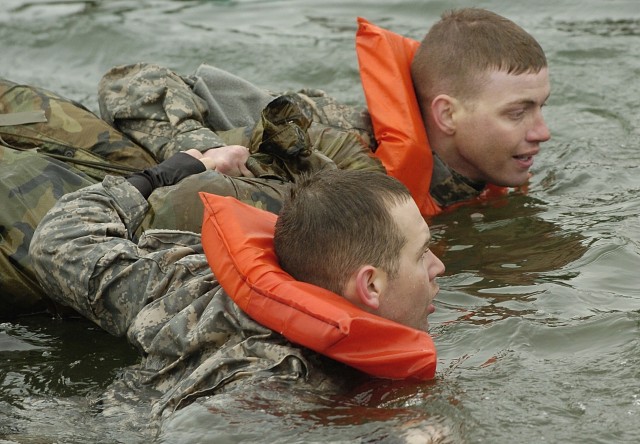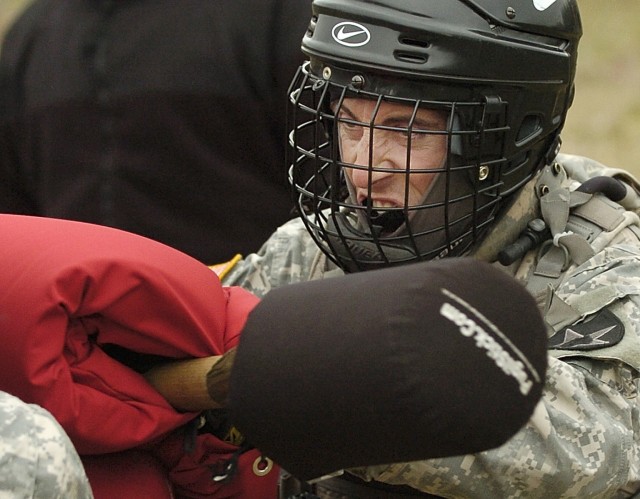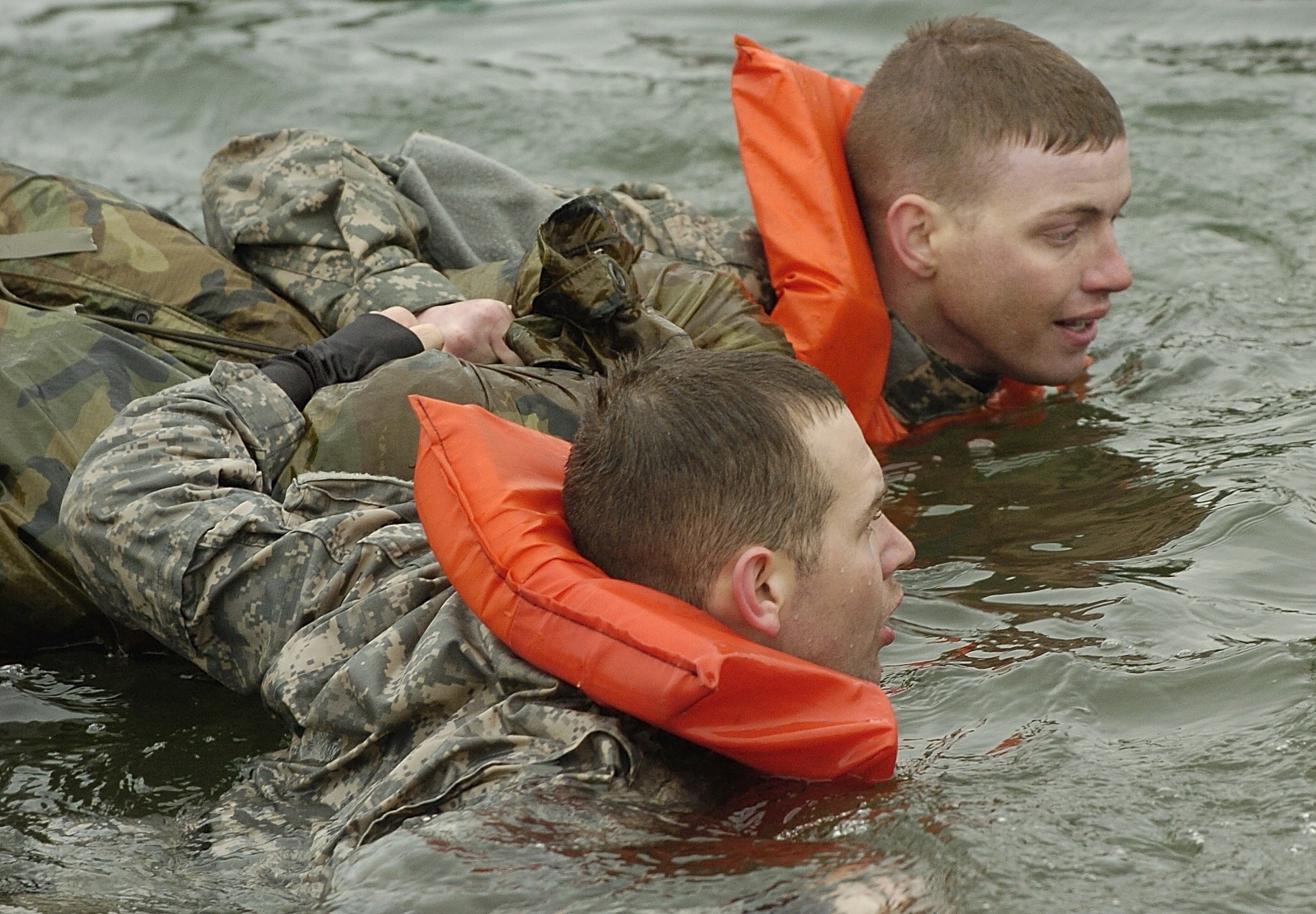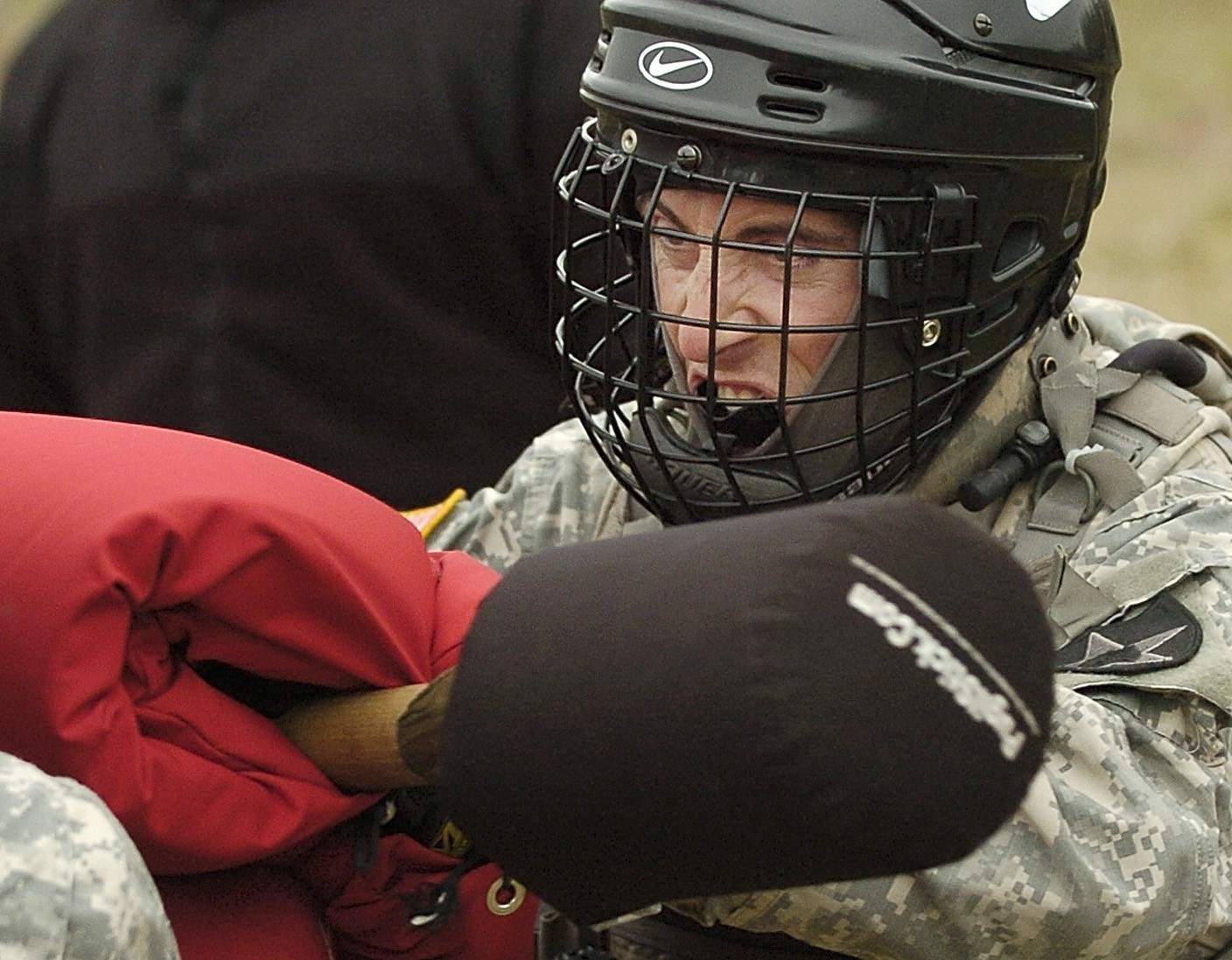FORT LEWIS, Wash. (April 25, 2008) - While most people go out of their way to avoid situations that produce the primal fears that humans share, cavalry Soldiers faced their fears of heights, water, darkness and face-to-face combat last week - all in a single day.
Trainers named the 1st Squadron, 14th Cavalry Regiment's challenging event "Cav Stakes," four days of intensive training evaluations of individual and team tasks, culminating April 17 in a day of confidence building at Lake Sequalitchew on North Fort Lewis.
"The idea was to progress from Soldiers getting proficient and feeling comfortable with their individual skills, knowing that they're trained," Capt. Clint Tisserand, 1-14 Cav. assistant operations officer said, "and bringing them to a team event - reconnaissance missions as a team. Now we're culminating the event with confidence training."
The squadron from 3rd Brigade, 2nd Infantry Division spent the first three days of last week working through scout-specific infantry skills, from weapons through communications to range estimation and vehicle identification. A stress-shoot range highlighted the early training in which Soldiers ran from doorways to windows to a series of barriers, shooting while coping with the elevated heart rates they are sure to experience in combat.
On Day 3, they performed reconnaissance missions on a 300-meter course. All of that set the stage for confidence training.
On the stakes' final day, sergeants and high-performing specialists cycled their scout teams from a poncho-and-ruck-raft-swim station to a log walk-rope drop station to pugil stick competition to finally arrive at a confidence course. Cavalry Soldiers put individual skills into action, but began functioning as teams, a key design of the event.
"I used this as our bridge from individual skills we've been doing into our collective training," Lt. Col. Joseph Davidson, 1-14 Cav. commander said. "So this is our gate. Obviously individual skills continue on as we do our collective skills, but it's the beginning as we move into our collective training."
"This is a good day to culminate it with," Tisserand said. "They've done well this week. You've been able to see the progression within the training. Some people are hesitant. You know they know the tasks but some of them were hesitant. Each day they've built confidence and it's reflected in the scoring. You can see the confidence building. The teams are becoming more connected."
Soldiers fashioned makeshift rafts out of their equipment, primarily their ponchos and ruck sacks, assisting the four-man teams in swimming across the narrow neck of the lake in 50-degree water. At the next station, teammates shouted encouragement as individuals climbed the 20 feet to a narrow beam and traversed it over water, then climbed further to pull themselves to the middle of a horizontal rope, hang and ask for permission to drop into the cold water.
For Spc. Warren Henderson of 3rd Platoon, C Troop, the climactic final training day was the memorable one.
"Today stands out," Henderson said. "I couldn't breathe when I surfaced (from the rope drop). It seizes your lungs up."
The young scout said he did well at the communications stations earlier in the week, but identified range estimation as a weakness requiring further work. He said the main value of the training was in "being better prepared and knowing your equipment better."
Spc. Javier Valdez, one of Henderson's teammates in 3rd Platoon, shared his trouble with range estimation, but said the team did well in assembly and disassembly of crew-served weapons. He sited the value in reviewing basic soldier skills.
"It gave us a chance to get back in touch with some of the skills we may have lost over the deployment," Valdez said. "It was awesome."
From a section leader's perspective, building camaraderie ranked high among the most important objectives of the week.
"We've done a lot of good training up to this week to make sure everybody was proficient in all the tasks," Sgt. David Stover, a Crazy Horse Troop section leader said.
"It was good team building, with events like this (log walk-rope drop) pulling everybody together. It's out of the ordinary. It gives them confidence they didn't know they had. You've got guys here shivering, cheering on their teammates, trying to get them across obstacles and though this week."
A more practical consideration is the knowledge that his subordinates can handle requirements he throws their way in the future.
"When we get into theater and something happens I can call down to Pfc. Yang and say, 'Hey, I need you to send a message to command and say this is what's going on' and feel confident he can accomplish that," Stover said. "Before this training, especially this week, that may not have been possible."
The event built trust in two ways for the squadron commander also, in his Soldiers and himself in their abilities.
"It gives me confidence that they have all the basic skill sets to train for our reconnaissance missions," Davidson said. "I'm very pleased so far with all that's been done."
Don Kramer: don.kramer1@us.army.mil




Social Sharing